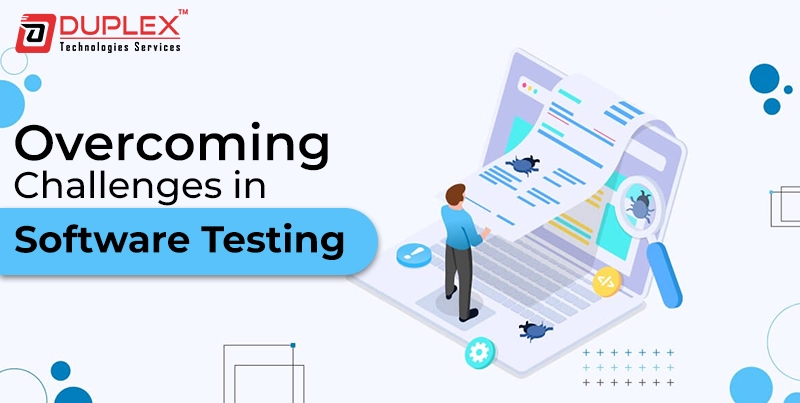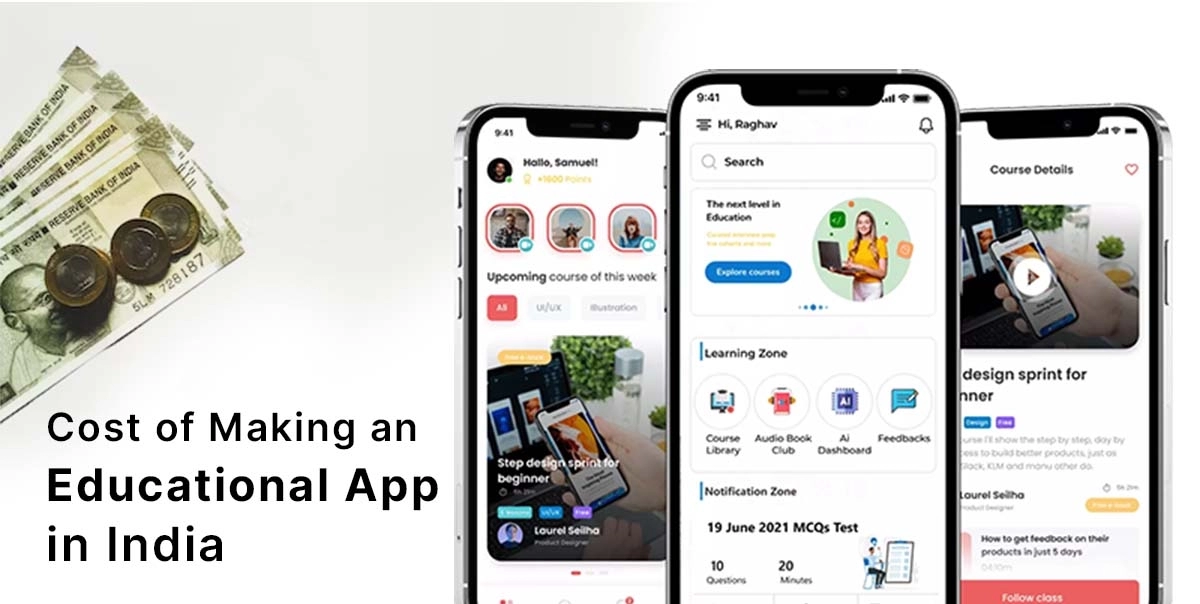Solutions for overcoming challenges in software testing | How to avoid the software testing challenges | Duplex Technologies

Posted By : Ambesh Mishra, Posted Date : Sep 21, 2024
Introduction to overcoming challenges in software testing
The aim of this blog is to provide solutions for overcoming challenges in software testing. As various developers deal with common software testing issues, they will get answers to their questions here.
It is impossible to imagine people’s lives without software, as it is applied to various devices that are used in our daily lives. Thus, there is a need to ensure the quality and reliability of the software. Testing plays an important role in the software development life cycle as it corrects the defective portion of code before an error occurs or a hacker infiltrates the security system. However, there are numerous software testing challenges that developers come across regularly, such as inadequate planning, restricted resources, and ever-changing technology. To do this, general difficulties must be faced bottom up. Against this background, we shall give recommendations for some of the most common software testing problems to help developers produce quality software.
Table of Contents
- Some common challenges in software testing
- Challenge 1: Inadequate Test Planning
- Challenge 2: Limited Test Data
- Challenge 3: Complexity of Modern Software Systems
- Challenge 4: Communication Breakdowns
- Challenge 5: Insufficient Automation
- Challenge 6: Insufficient Testing Habitat
- Challenge 7: Difficulty in identifying and reproducing defects
- Challenge 8: Limited Resources
- Challenge 9: Keeping up with the changing technology
- Challenge 10: Managing Test Debt
Some common challenges in software testing
Given below are the solutions to some of the software testing challenges:
Challenge 1: Inadequate Test Planning
This challenge is often observed when there is no proper plan to conduct a test or a test is conducted without a proper plan in place.
- Problem: Lack of test planning results in ineffective testing, overlooked defects, and late product delivery. Essential areas can therefore go unaddressed since testing cannot be well-coordinated when there is no strategy.
- Solution: For overcoming challenges in software testing, write a test plan and strategically allocate the testing processes according to the risks and needs of a business. Ensure availability of adequate human resources and logistics and finance facilities. In the following points, learn how to review and update the plan to make sure that it is viable for your input.
Challenge 2: Limited Test Data
In any testing situation, there is a set of test data that is available to the testers as they develop their test cases and/or test scripts.
- Problem: Insufficient test data results in inadequate testing, improper testing outcomes, and failed identification of defective features. The inability to test all possible scenarios means that sometimes there is a deficiency of data to work on.
- Solution: To decrease these common software testing issues, prepare realistic test cases that should include all variants of the data that the system might encounter. Implement data masking and anonymization methodologies to ensure that confidential data is not exposed. Test data must be current and valid with regard to the test to be conducted.
Challenge 3: Complexity of Modern Software Systems
In our modern world, there are numerous applications of software systems in various fields and industries, and new applications are being developed constantly.
- Problem: It is quite hard to test such systems due to their increasing complexity. This makes the testing process take more time and effort as compared to a simple system.
- Solution: For overcoming challenges in software testing, divide large systems into sub-systems and concentrate on areas that are most vulnerable to failure. For complex workflows and integration testing, different testing methodologies of the modular type should be used and automation means should be turned to.
Challenge 4: Communication Breakdowns
- Problem: Lack of proper communication between the teams results in issues such as the team missing defects, and lack of releases on time, among others. It is quite established that breakdowns in communication lead to testing delays.
- Solution: To prevent these common software testing issues, encourage cooperation between testers and developers as well as with business representatives. It is important to communicate testing approaches that can be easily understood in order to avoid misunderstandings between the parties concerning the testing goals and coverage. Create feedback sessions consistently so that these problems can be solved as soon as possible.
Challenge 5: Insufficient Automation
Insufficient automation means the involvement of a smaller number of testing tools, a slow testing process, more dependency on manual work, and various errors.
- Problem: Manual testing requires a lot of time, inaccuracy, and, of course, delayed delivery of the software. Lack of automation means that testing cannot be done to the optimum.
- Solution: To eliminate these common software testing issues, use computers and other electronics to enhance and enhance the testing process. The key point to follow when using automation is to target the risky functions and link automation with CI/CD solutions.
Challenge 6: Insufficient Testing Habitat
Irrelevant testing Ambience can produce various problems, such as slow testing, enhanced cost, inaccurate results, etc.
- Problem: Lack of proper test environments implies that the tests themselves are not accurate, defects are overlooked, and there are prolonged releases. Lack of environment leads to testing constraining.
- Solution: To avoid these software testing problems, set up production-like testing environments that are stable, secure, and securely tested. Reduce the cost and enhance flexibility by utilizing virtualization and cloud technologies.
Challenge 7: Difficulty in identifying and reproducing defects
Some of the time, developers are not able to identify the faults and bugs in software due to the complex infrastructure or insufficient tools.
- Problem: Complex prints are harder to replicate defects, which results in late product release, cost, and low product quality. Complex defects are known to contribute to testing time constraints.
- Solution: Employ modern troubleshooting methods to establish fundamental causes. Use logging and monitoring tools to collect information about the functioning of the system. Spend time with the development teams to ensure that you understand the structure of the systems.
Challenge 8: Limited Resources
Software testing might be affected if there are fewer developers, a low budget, tools, or time.
- Problem: When there is a lack of resource allocation, then there is only partial testing that is done, expired defects are not detected, and products are released late. Availability of limited resources is a primary factor that may lead to several tests being conducted with low efficiency.
- Solution: To reduce these software testing problems, the testing efforts should be prioritized depending on their risks and business needs. Make proper use of the resources and seek external resources wherever required. Apply system utilization strategies to make the best out of resources.
Challenge 9: Keeping up with the changing technology
New updates, such as tools and features, are launched every year in the industry. Keeping up with them is crucial to staying competitive.
- Problem: Fast-evolving technology translates to testing skills becoming obsolete, missed defects, and delayed software release. This is one of the reasons for testing delays due to outdated skills.
- Solution: To eliminate these software testing problems, make an effort to regularly update yourself with the latest developments by undergoing training, attending conferences, and reading online. Promote the idea of ongoing learning and personal and career growth of personnel in testing teams. Integrate new technologies in the testing system to enhance testing effectiveness.
Challenge 10: Managing Test Debt
Managing test debt refers to the method of identifying the defects and requirements of maintenance during software development.
- Problem: Test debt builds up and causes late release, high cost, and low quality of software. The cost of testing increases or it may lead to extensive testing times when the test debt accumulates.
- Solution: To overcome these software testing challenges, the test should be refactored as often as possible. The last recommendation is to take advantage of automation and decrease the amount of effort needed to maintain tests while increasing testing effectiveness. Follow a test debt reduction regime plan so that progress is made continuously.
Conclusion
To sum up, it is critical to deal with obstacles in software testing to achieve a successful outcome of the process and obtain high-quality software. This blog has responded to different typical software testing challenges that developers encounter, such as lack of planning, scarce resources, and dynamism of technologies. That is why it is our goal to offer functional ways and simple directions to help testing teams deal with these common software testing issues and, as a result, perform testing as efficiently as possible. By using the knowledge provided in the blog, developers can optimize their testing practices and avoid mistakes, as well as make the customers happier. This way, testing teams are better equipped to work in the interest of software testing while appreciating and addressing its complications.




















































































